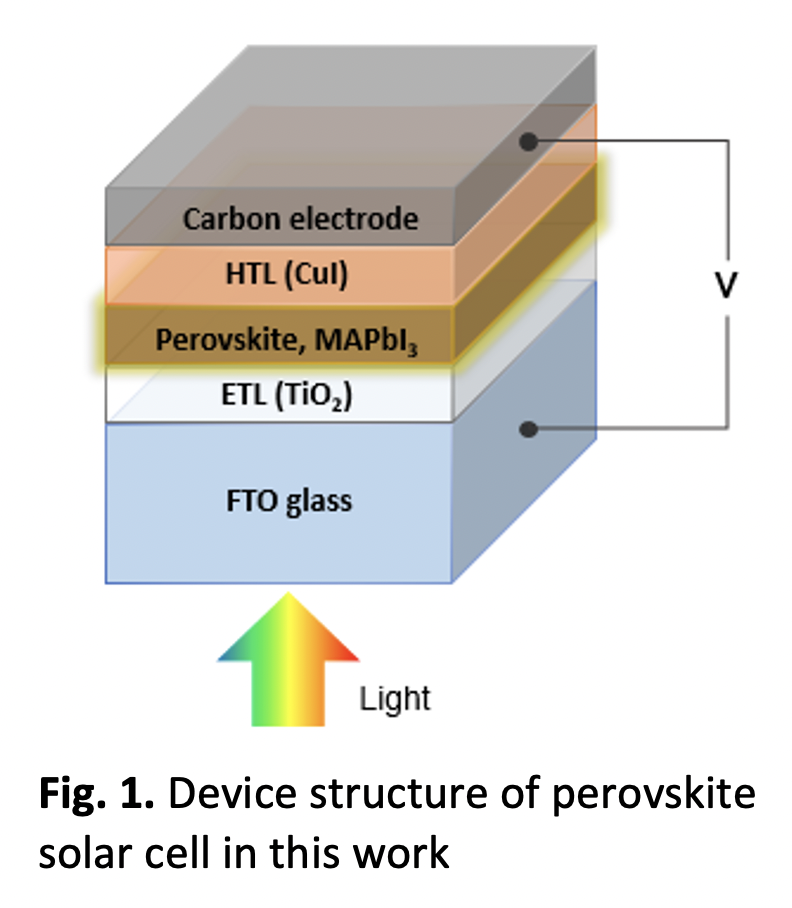Development of Halide Perovskites for Solar Cell Applications
DOI:
https://doi.org/10.37934/araset.36.1.7482Keywords:
Solar Cell, Perovskite, MAPbI3, Power Conversion EfficiencyAbstract
Halide perovskites have shown great potential for high efficiency solar cells, owing to their excellent optical and electrical properties. In this work, the preliminary development of methylammonium lead iodide (MAPbI3) perovskite thin film and planar negative-intrinsic-positive (n-i-p) thin film-based perovskite solar cell were demonstrated. The MAPbI3 thin film was successfully prepared using the anti-solvent assisted “one-step” solution deposition method. Ultraviolet-Visible (UV-Vis) absorbance analysis on the MAPbI3 thin film indicated the presence of broad absorption over the visible region from 450 to 800 nm. The Tauc plot bandgap energy was determined as 1.535 eV. Atomic force microscope (AFM) imaging evidenced uniform and smooth perovskite film with average grain size of 90 nm and root-mean-square roughness of 3.3746 nm. The current-voltage (I-V) curve of the perovskite solar cell demonstrated a linear relationship and inferior photovoltaic performance, hence the design and fabrication process of the solar cell necessitate further investigations and improvements.Downloads
Download data is not yet available.




























